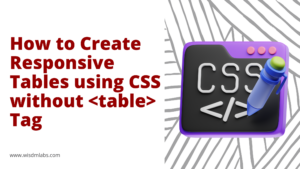If you’re familiar with the mechanisms of elearning, chances are you’ll have come across the term Collaborative Learning. You’ll find it mentioned on most elearning forums and discussion pages, used by professionals the world over in association with building a learning community and how it’s a more effective means of teaching.
Let’s dig a little deeper.
What is Collaborative eLearning?
It’s not exactly what you’d call a vague term, being pretty literal in what it means: to learn in collaboration with your peers.
Collaborative e-learning, in general, is a hands on approach to e-learning where technology lets learners interact with each other in order to gain a better understanding of the subject matter. They can share ideas and benefit from each other’s skillsets and resources.
In simple terms, collaborative learning acts as catalyst; what might take a student hours to learn can be understood in a matter of minutes should he be a part of a group attempting the same as a unit.
Why Collaborate?
Working as a group not only leads to better communication between learners, but dramatically improves upon their thinking and analytical skills, while inculcating leadership qualities, all at the same time. It creates an engaging and interactive elearning environment that brings out the best in learners.
Plus points on the technical end of things are numerous:
- Maintain a central repository of information and share it securely between the collaborators.
- Communicate in real time using audio or video conferencing in high definition to obtain a life-like virtual presence.
- Co-create and co-edit documents and rich media files, allowing collaborators to effectively work on projects together.
- Set up a social medium where collaborators can interact and post content relevant to the subject matter.
The idea is to simulate the mechanics of a traditional workroom; a group of individuals working and learning in association with one another. This presents a stark contrast when compared with conventional methods of e-learning, which has often been criticized for its isolated environments.
How exactly can you implement Collaborative eLearning?
A number of ways.
When you look at K-12 and Higher Ed eLearning, most common methods include gamification by setting up a point system combined with a social network. So that learners can set up their user profiles and proceed with the lessons and quizzes in a manner that’s similar to playing an online game, the one with a higher score has the satisfaction of being called best in the class, quite literally in this case.
Of course this is going to make the other learners want to better their e-learning skills in order to score even higher and take the top spot; after all there’s nothing as satisfying as showcasing your achievements on social media, for everyone to see.
If you’re looking for a more formal and organized approach à la Corporate Training or Workplace Collaborations, you have online collaboration tools like Podio or MindMeister which are great for the purposes of group projects, research and even brainstorming. Google Docs is another great alternative if your aim is to create collaborative documents. It is by far the most recognized and the easiest to use, should you not want software training to take up a lot of time.
An additional advantage would be encouraging the use of synchronous collaborative tools like audio and video conferencing, instant messaging and whiteboarding. And forums, naturally, for when learners (or workers) need to discuss out in the open and contribute to the subject matter.
Collaborative Tools in Popular LMSs
There are innumerable Learning Management Systems available out in the digital space, so listing out options for each and every one of them is moonshine.
But what we do have is three major players in the LMS market that account for a huge chunk in terms of users: Blackboard, Moodle and WordPress.
Blackboard has a great set of collaborative tools packaged as: Blackboard Collaborate. They cover everything from videoconferencing to an interactive whiteboard which allows for real time annotations and text editing.
Collaboration in Moodle is all about Groups, Wikis, Forums and instant messaging. Using groups let’s you to add an extra dimension to interactive activities: giving groups of students a private or shared space to discuss and collaborate. Wikis are Moodle’s take on collaborative documenting: groups of people can create and edit a document together called as wiki. Groups also provide the members with a wiki space to co-create.
Apart from those, Moodle offers ways to integrate tools like Google Apps or even a plugin that lets you access Blackboard Collaborate.
Things get simpler when it comes to WordPress. While it’s not an LMS on its own, plugins like LearnDash, WP Courseware or WooThemes’ Sensei can totally transform it into one. Furthermore, we have several extensions that take care of all your collaborative needs, let me list them out for convenience:
Gamification: Badge OS
Social Media: BuddyPress, WP Symposium Pro
Forums: bbPress, CM Answers
Audio/Video Conferencing: Skype Extension
Collaborative Document Creation: Google Apps
TL;DR
With over 20,000 extensions, collaborative learning is best done with WordPress. Any collaborative functionality that you may require, you look up a plugin for it or build one yourself. The above mentioned plugins are not the only options for the corresponding functionalities, they’re just recommendations (being good at they do).
To sum things up, collaborative eLearning could defined as the sum total of: ways to engage learners in the process of elearning (gamifications), an interactive platform (social media), real time communications (synchronous tools) and means to co-create content (online collaborative tools). Talk about a virtual workroom experience!
And once you’re done taking care of the above mentioned key strategies, it’s a no brainer that the learning statistics for your eLearning system would definitely be shooting through the roof.
Mission Accomplished.











